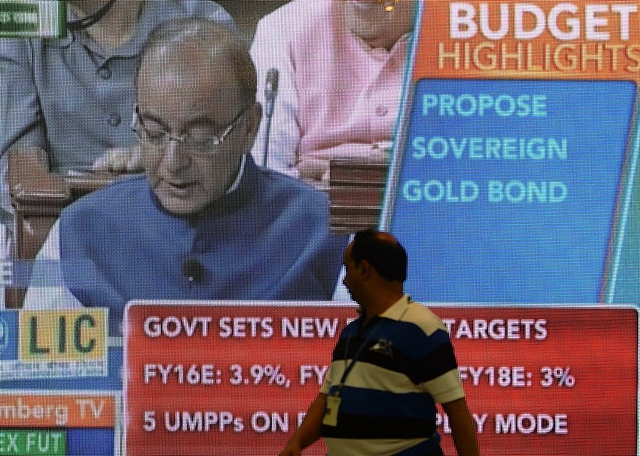
Jaitley’s Budget Speech: Which Words Used More, Which Ones Left Out?
A look at the vocabulary of Arun Jaitley’s budget speech compared to other budget speeches of the recent past
In May last year, we came out with a comprehensive analysis of the Union Budget of the Government of India using the finance minister’s budget speech. This qualitative analysis served to understand and highlight if specific areas were given differential emphasis by different governments. Our database contained nearly 20 years’ worth of speeches, commenting on a multitude of policies and politics. In light of the recent budget speech of Arun Jaitley, we decided to revise our figures and compare this year’s general budget with 2015-16.
We first provide an overview of the 2016 budget speech relative to the 20-year average (since 1996). Since research and academia were our initial focus, we find that this year’s budget speech had lower than average number of mentions of the word ‘research’, and no mentions of the word ‘science (scientific)’. ‘Academic’ is mentioned only once, but this is an improvement over the average (0.43).
For a budget touted as agriculture-centric (as one of the 9 pillars cited by Jaitley), the number of mentions of the words ‘agriculture’ or ‘agricultural’ was at 15, which is lower than both, the NDA average (18.43) as well as the overall average (20 mentions). However, the mentions of agriculture were nearly double of that of 2015’s budget speech, indicating that the government may be getting serious about the primary sector. If the budget speech is considered to be an indicator of policy preference, then the cost of greater spending (or emphasis) on agriculture is borne perhaps by the industrial sector. The words ‘industry’ or ‘industrial’ found only 7 mentions (only 20% of the NDA average of 35.43), marginally lower than the 10 mentions in 2015-16. The past two budget speeches also have the most mentions of the word ‘business’ (or ‘corporate’) among all budget speeches since 1996.
The NDA government continues to stress on infrastructure development, with this year’s budget speech containing 21 mentions of the word ‘infrastructure’, compared to a slightly higher count of 28 in the past year’s speech and broadly consistent with the NDA average. Surprisingly, last year’s budget speech contained the highest-ever mentions of the word ‘education’ (29), making Jaitley an unlikely champion for the education sector among his past counterparts (the closest competitor is Pranab Mukherjee, with an average of 12.25 mentions over four budget speeches). Not much has changed in terms of women’s issues for Jaitley since his last speech, and this remains broadly consistent with the overall average. Finally, there have been fewer mentions of the word ‘international’ or ‘foreign’ in this year’s budget speech, pointing towards the greater emphasis on domestic issues for the current government. This is in stark contrast with the 39 mentions of the same word in the 2015-16 budget speech.
A government is said to be defined well by the policies that it creates, and as a supplementary analysis, we considered the mentions of popular policies between this year’s budget speech and the past year’s. In our sample of interest, we considered the Swachh Bharat Abhiyan, Nirbhaya Fund, MGNREGA, Skill India, Digital India, and Make in India. None of these policies have been mentioned more in the current speech than they were in the past speech, perhaps because some of these policies were introduced in the past year’s budget. Swachh Bharat, for example, has only 3 mentions compared to 11 mentions in the past year. Despite the emphasis on Make in India this year, the number of mentions was halved—again indicative of an emphasis on other areas of policy thrust this year.
Our analysis makes a large number of assumptions and is by no means meant to be a comprehensive (or critical) account of the policy preferences of the NDA government. However, it does serve the purpose of examining emphases on various sectors and policies. Others may be quick to point out that a government that speaks less and does more is a good government (and more precisely one in line with the Modi Government’s mantra of “Maximum Governance, Minimum Government”). The only way to confirm this is to reconcile the talking with the doing (i.e., with the trends in expenditure that may be found elsewhere).
Anirudh Tagat and Hansika Kapoor are Research Authors at the Departments of Economics and Psychology, respectively, at Monk Prayogshala, a not-for-profit academic research institution based in Mumbai.